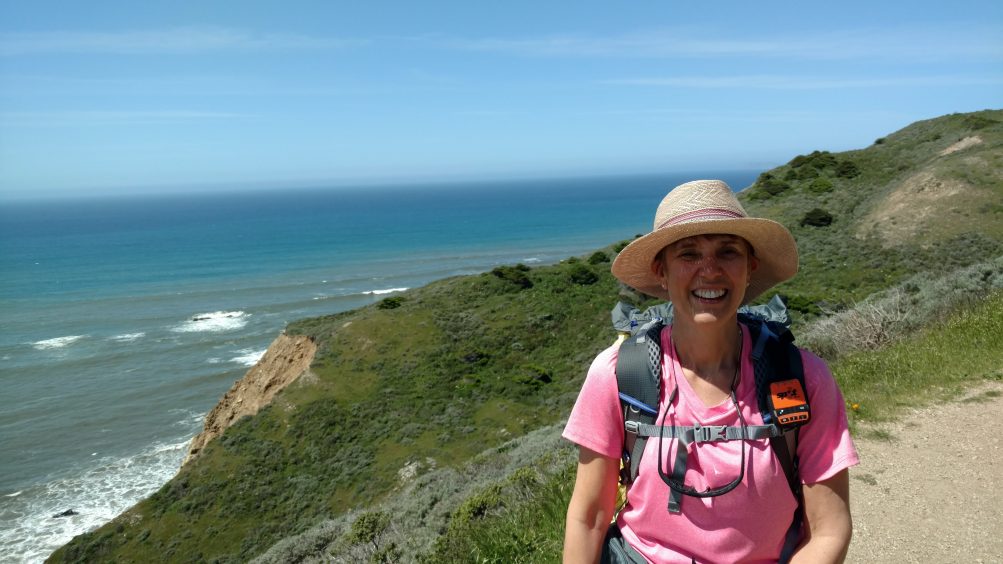
Ocean views were plentiful on the Coast Trail to Wildcat Camp.
I had the opportunity to go backpacking at Point Reyes National Seashore twice this year. Since I only live about an hour away, it’s surprising that I’ve never hiked the trails there. I have wonderful memories of walking along Limantour Beach and having big bonfires in high school but haven’t been out to the coast in far too long. The Wildcat Camp trip was one that I led for the Sierra Club trip with the San Francisco Bay Chapter Backpack Section. The Glen Camp trip was with my husband and a friend.
Download my free backpacking gear and first aid kit checklists here!
Early in the summer, I took a group out to Wildcat Camp. This was billed as an easy introduction to backpacking and we had a nice blend of new and experienced backpackers, the latter jumpstarting their backpacking season before the snows melted in the Sierra.
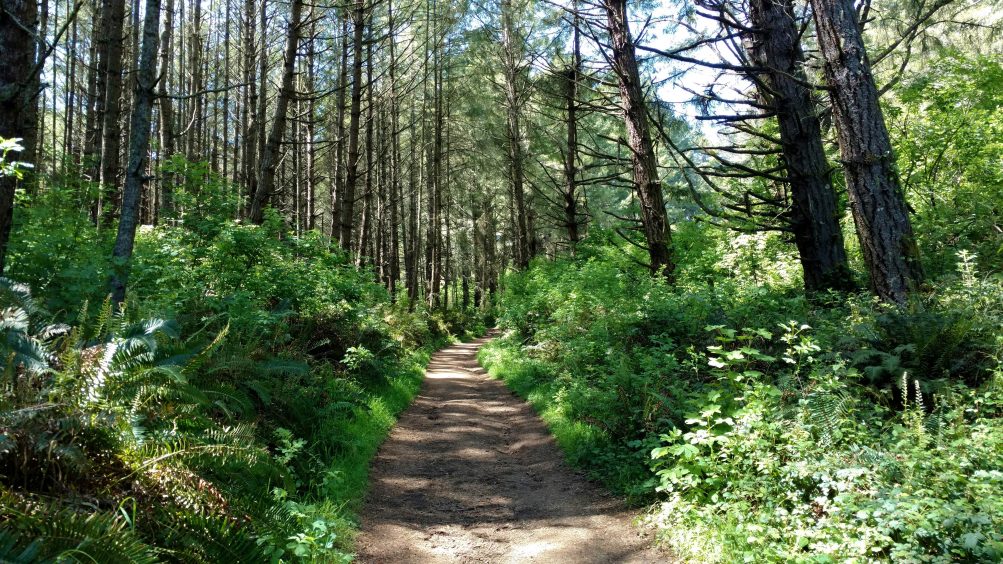
The Coast Trail alternated between shady forest and ocean views.
Trail: We hiked the Coast Trail from Palomarin, a trailhead with a large parking lot located near Bolinas Bay. On a Friday morning, the parking lot was practically empty but on Saturday, the lot was overflowing and people were parking down the road for several miles. It’s a beautiful 5.5-mile hike from Palomarin to Wildcat camp, first along a shaded wooded path, then open to the vast sea, eventually angling inland to skirt small lakes (Bass Lake, Pelican Lake, Ocean Lake). The trail undulates with 300 feet of elevation gain but overall it’s a gentle path. It is perfect for beginners or for the first trip of the year when you need to get the winter kinks out. The site is accessible from other trailheads as well.

We passed several lakes on the Coast Trail to Wildcat.
Parking: On a Friday morning, the Palomarin parking lot was practically empty but on Saturday, the lot was overflowing and people were parking down the road for several miles. This is a very popular day hike.
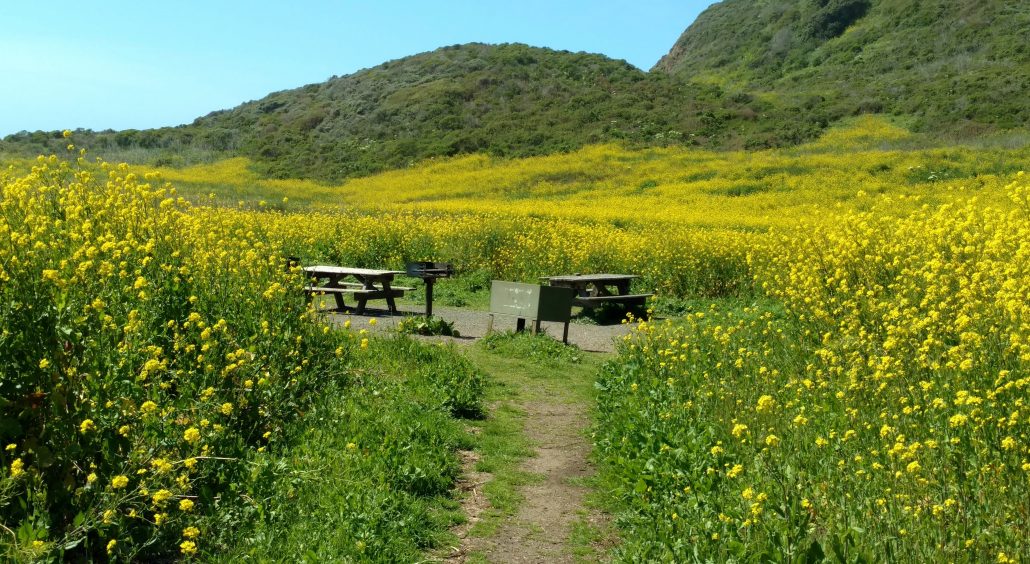
The mustard was in full bloom at Wildcat Camp in mid-April.
Campsite: On the map the campsites look like they are practically on the beach but they are actually inland just a bit. There are some high bluffs that protect the camp and obscure any views of the ocean. It’s a very short walk of fewer than five minutes to the beach. The campsites have potable water, pit toilets, food storage boxes and picnic tables. When we were there in mid-April the mustard was so tall that we were visually screened from the other nearby campsites. There were a couple of small, individual campsites tucked into the bluffs.
Permit: I reserved a group site that was large enough to accommodate 10 people. I applied for the permit about months before the trip, which was late. Luckily I found one group site available on a Friday night.

The one-mile hike to Alamere Falls was a nice addition to the day.
Alamere Falls: A popular activity is to walk to one mile south from Wildcat Camp on the beach to Alamere Falls. The tidefall is unusual in that it falls into the ocean from a steam. This walk must be done at low tide as the beach can be completely cut off during high tide. I used the Tide Chart Free (by Hanitaro) app to time our walk during the afternoon. If the waves reach the bluff, do not attempt to walk to the falls.
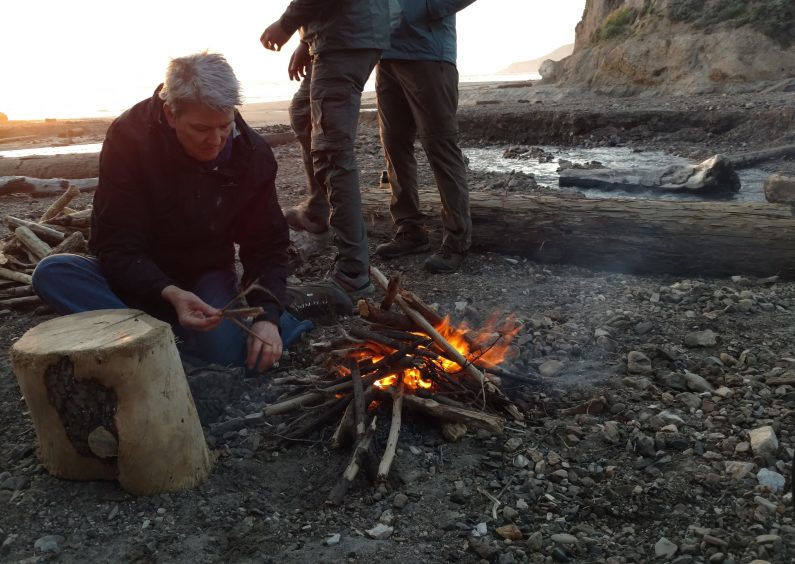
Everyone was happy to be able to have a fire on the beach at sunset.
Bonfire: With a free fire permit, which you may request when you pick up your overnight permit, it is legal to collect firewood and have a fire on the beach. This was a big hit with the group at sunset. We started collecting firewood as we approached Wildcat from our walk to Alamere Falls as there was a good supply some distance away.
Later in the summer, we decided to do an impromptu overnight. On a whim, I checked Recreation.gov and was pleased to see that there was a campsite available at Glen Camp on a Monday night.
Glen Camp is very different from Wildcat Camp in that the campsites are tucked into the forest more than a mile from the beach. This gives it a different feel but it’s still in a beautiful part of the park.
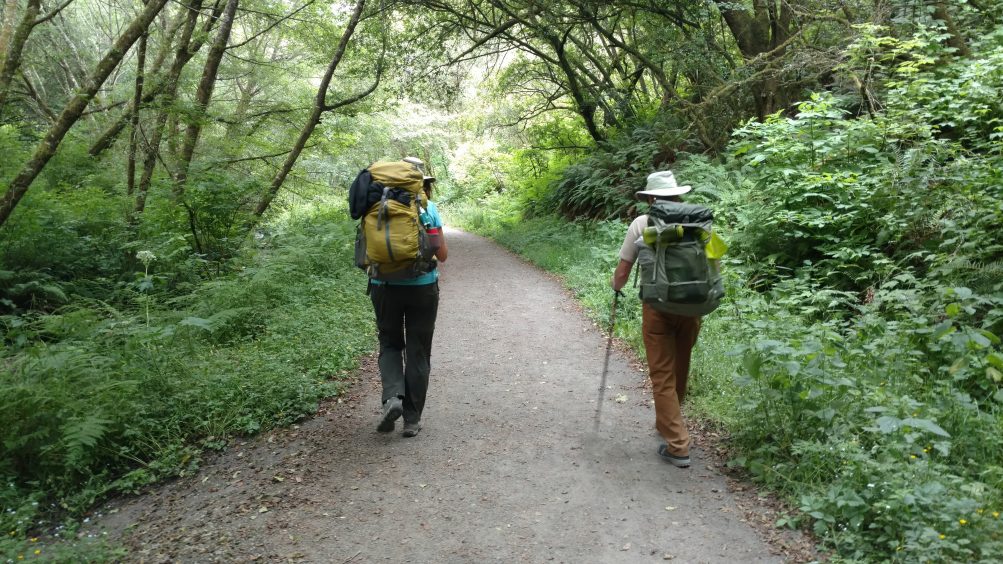
The entire length of the Bear Valley Trail was lush, green and flat.
Trail: The 4.6-mile hike on the Bear Valley Trail from Bear Valley Visitor Center is one of the flattest trails I’ve encountered in California. It’s a pleasant stroll for much of the distance and is incredibly green. The trail follows a gurgling creek through thick forest that provides plenty of shade. Ferns abound as well as tangled vines that fill in the spaces between trees. We passed several junctions to other trails, eventually coming to a place where several trails came together. After 3.1 miles, we turned left off of the Bear Valley Trail on the Glen Camp Loop, where we encountered our first hill. It wasn’t all that high but after miles of easy loping, this last 1.5 miles had us huffing and puffing.
Parking: There is a large parking lot at Bear Valley Visitor Center, right at the trailhead.

The campsites at Glen Camp are in the forest, a mile from the beach.
Campsite: There is a group of campsites (#1, 2, 3, 4, 11, 12) ringing a small meadow and are all OK, most with a bit of privacy on at least one side. The exception is one campsite (10) that they stuck right in the little open space in the middle, which is on full display to all the other campsites. The campsites have potable water, pit toilets, food storage boxes and picnic tables. There is a trail that leads to the remaining campsites (#5, 6, 7, 8) that have more privacy.
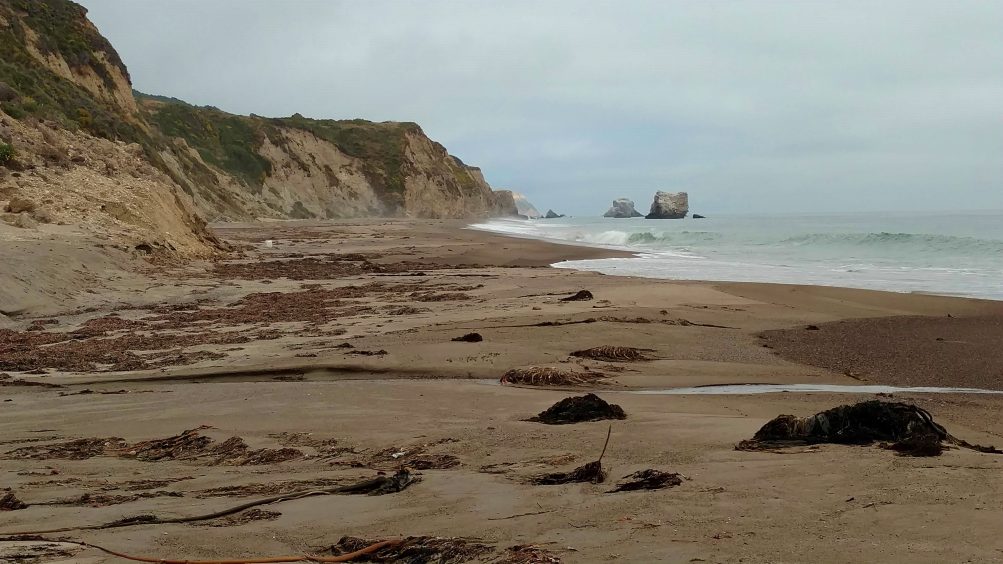
Kelham Beach was deserted.
Kelham Beach: This is a beautiful beach that is often deserted. There are other beaches that are more accessible by car or shorter hikes. If you don’t mind some extra hiking, this is a nice destination after setting up camp. To reach Kelham Beach, return to the Bear Valley Trail by backtracking 1.5 miles on the Glen Camp Loop Trail. Once you rejoin the Bear Valley Trail it’s 0.9 miles west to the Coast Trail and 0.5 miles north to Kelham Beach (2.9 miles total from the campsite one way; 5.8 miles round trip). It remains pretty flat the whole way. Turn right (north) on the Coast Trail to walk along a bluff. You’ll see the signs to find the short trail down to Kelham Beach via a long metal staircase to the beach.
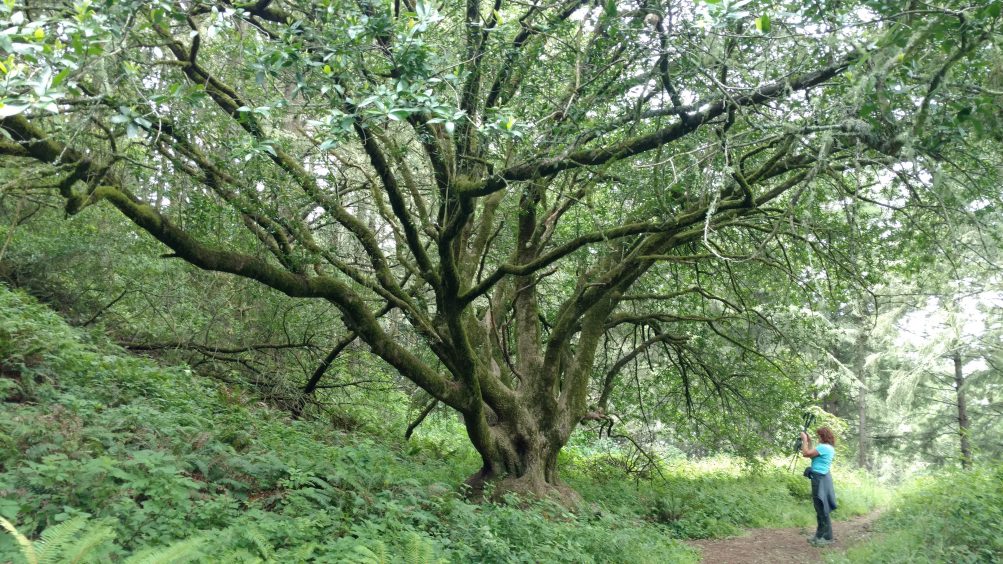
This beautiful oak was our reward for climbing up the Sky and Baldy Trails.
Sky Trail Loop: On the return from Kelham Beach, we made a loop by turning left from the Coast Trail onto the Sky Trail for 1.5 miles. We then turned right onto the Baldy Trail for 1.1 miles. Sky and Baldy have quite a bit more elevation gain than the Bear Valley Trail and are significantly overgrown in spots, but it’s a nice, moderately strenuous hike. We gained 960 feet in a scant mile. The Baldy Trail brings you back to the Bear Valley Trail at the junction where you can pick up the Glen Camp Loop Trail to return to the campsite. Starting from the campsite, this made a 7-mile loop.
Point Reyes National Seashore offers a unique overnight camping experience on the coast of Marin County. It is ideal for people new to backpacking or those looking for easy to moderate terrain. When the Sierra is snowbound, this is an alternative and is a good way to kick-start or wind down the backpacking season. It’s within an hour’s drive from many locations in the San Francisco Bay Area and is accessible year-round.
Sierra Club Trips
Check the Sierra Club ‘San Francisco Bay Chapter’ Events Calendar to find backpacking trips all over California.

Sunset at Wildcat Beach
 Previous Post
Previous Post

Denise Spruce says:
I’m so happy that you went to Pt. Reyes and especially Wildcat Beach. That was my first backpacking experience 47 years ago when I was 12. I have fond memories from it and look forward to taking my husband someday. The Bear Valley Trail is so easy for a newbie that it’s a wonderful first time experience.